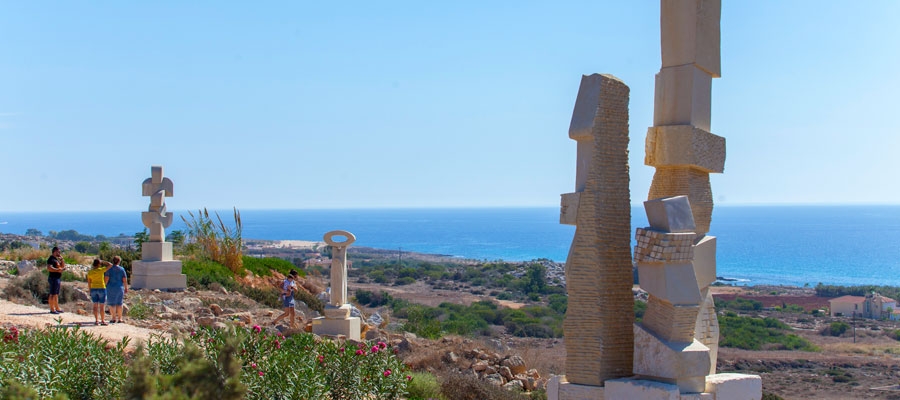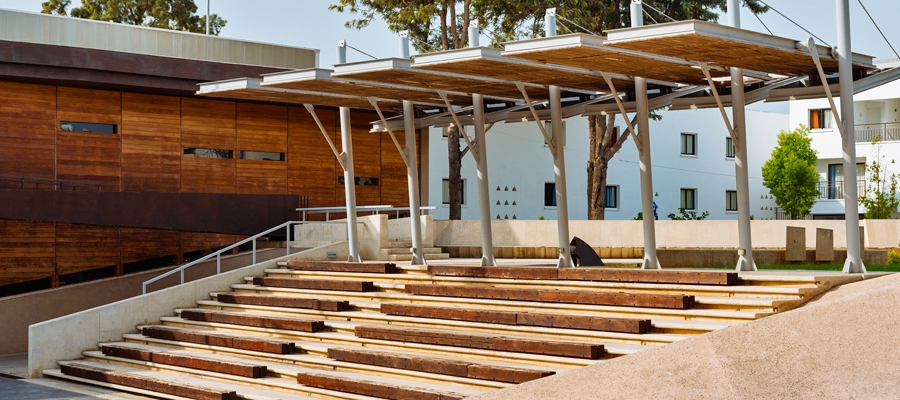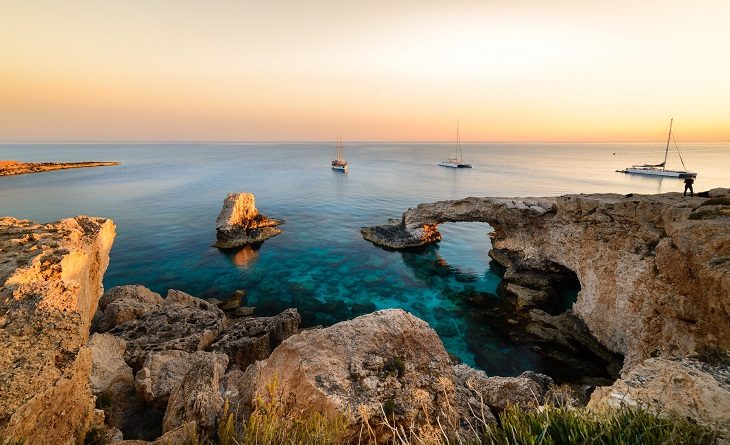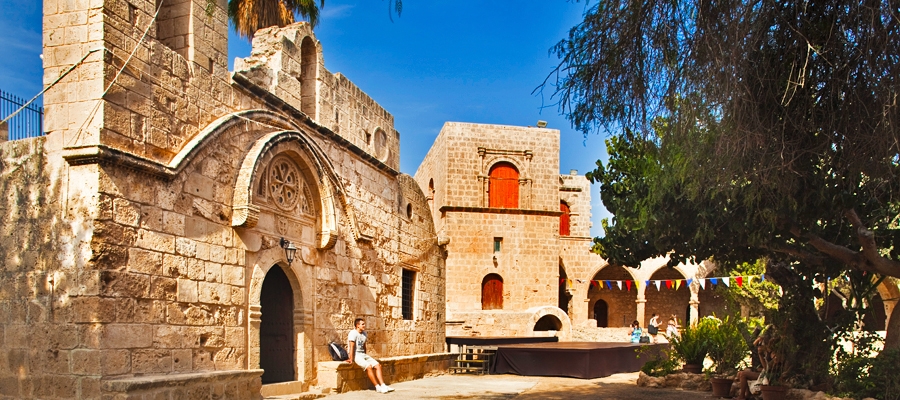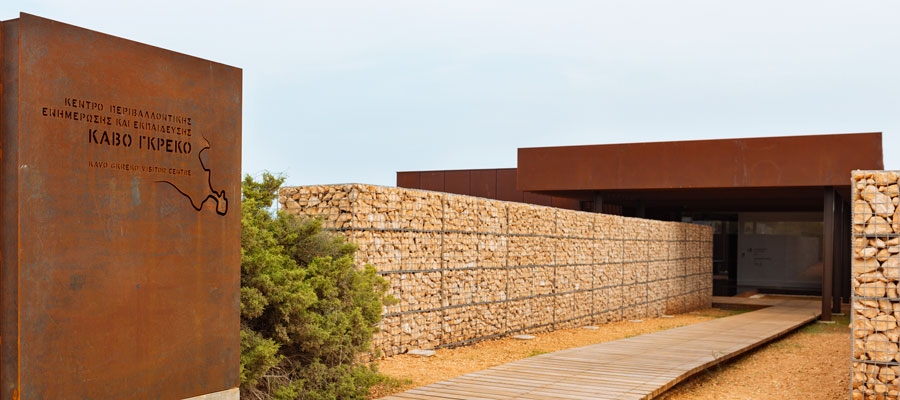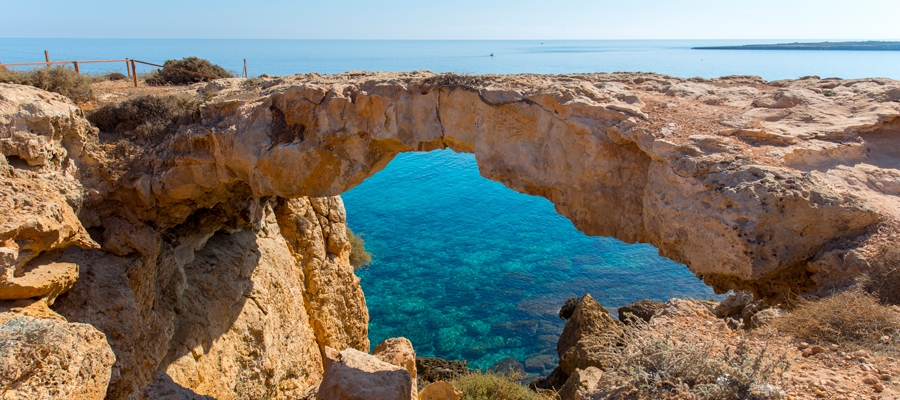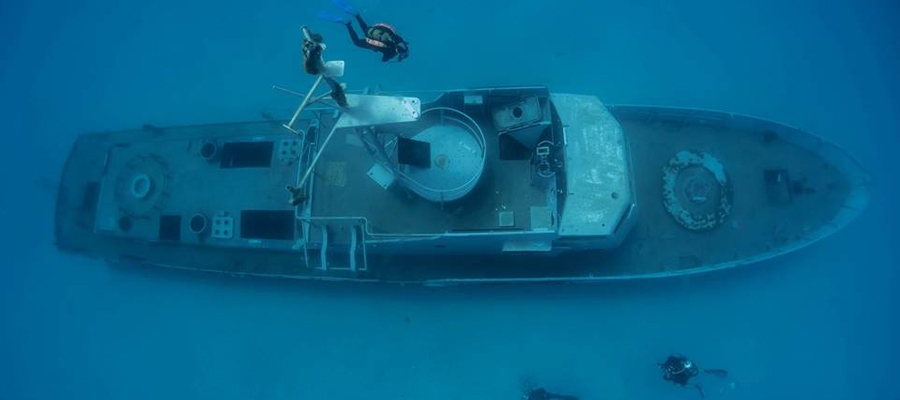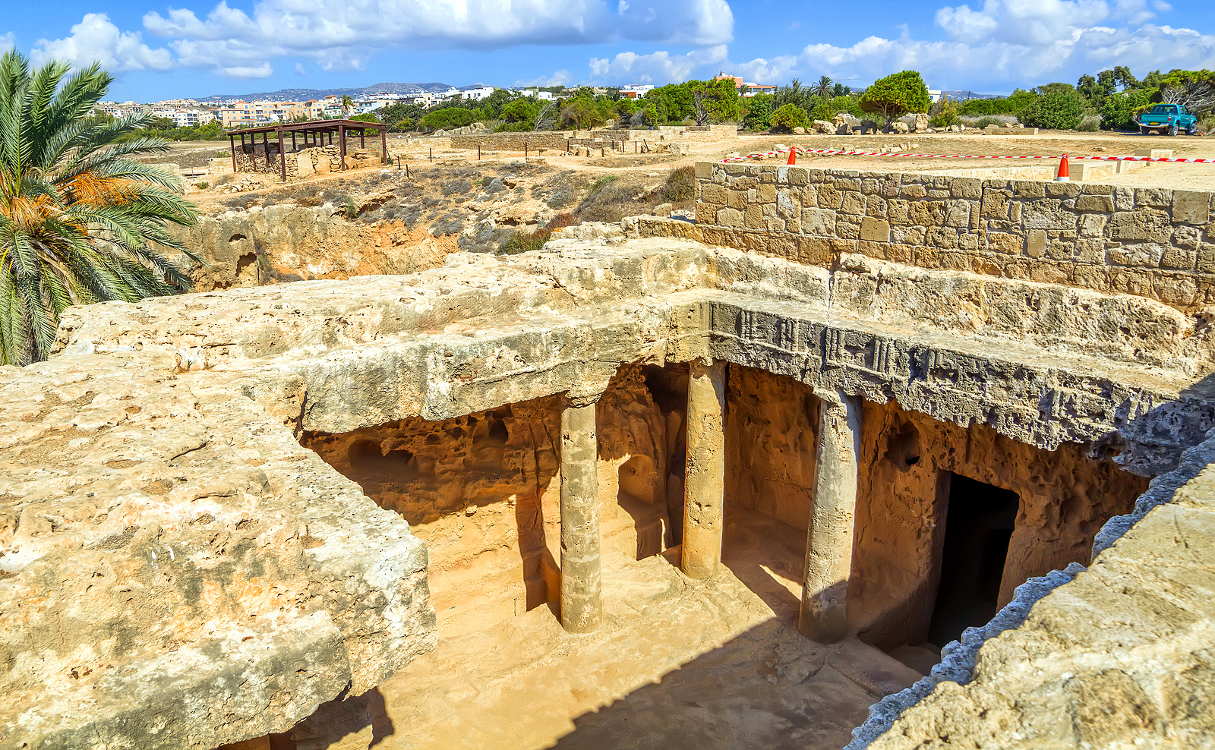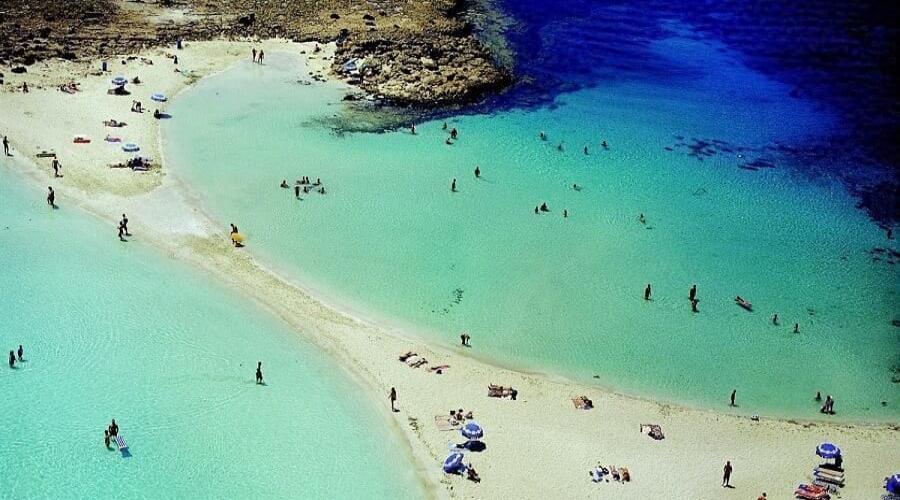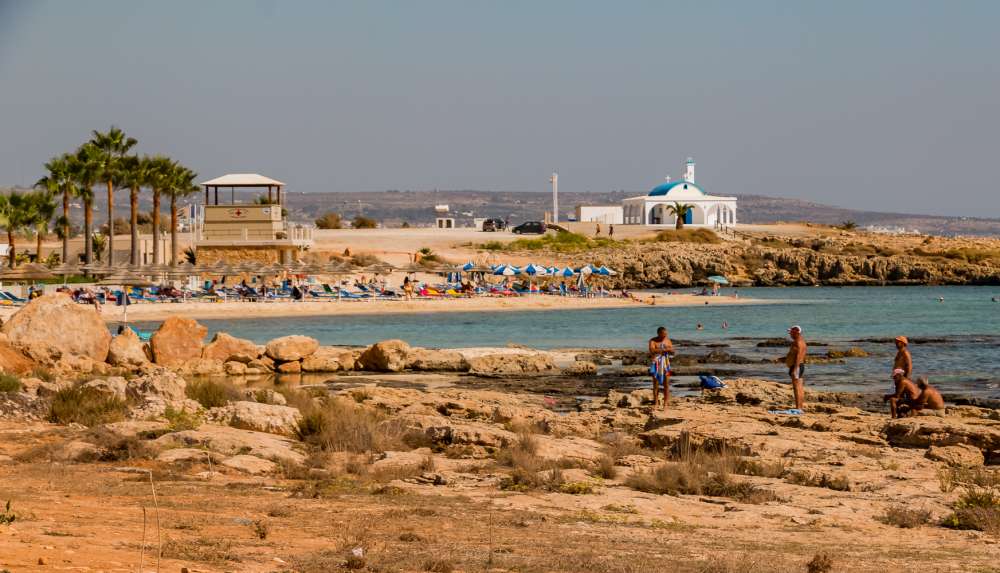1.Agia Napa Sculpture Park
Located at the crossroads of Cape Gkreko and Kryou Nerou Avenue, the 20.000 square metres sculpture park and its adjoining cactus park offer a beautiful setting for a stroll with stunning, panoramic views, and benches along the way.
The sculpture park consists of a large collection of pieces by over 50 artists from around the world who have participated in the annual Sculpture Symposium held by Agia Napa Municipality. The expansion of the collection is an ongoing project that is continually being added to, and in 2015, artists from around the world created their sculptures on-site over a period of three weeks, turning the park into an open-air workshop.
The Park of Mediterranean Plants, Cacti and Succulents is an extension of the sculpture park and is also an ongoing project to showcase the various cacti and dried plant varieties of the island.
2.Thalassa Agia Napa Municipal Museum
Named after the Greek word for ‘sea’ – the Thalassa Museum was created to promote awareness of the marine heritage of Cyprus from prehistoric times to the present, and is a modern, interactive museum, housed in a multipurpose cultural centre.
Pride of place among the exhibits is a lifesize replica of the famous 4th century Greek trading ship ‘Keryneia II’ that sank off the coast of Keryneia around the year 300 BC. Due to the museum’s design, the ship can be viewed from different levels, including a birdseye view – as can the other exhibits, that include pottery and other antiquities.
Housed in the basement is a marine life section with various exhibits, from fish and sea mammals to crustaceans, corals, shells and fossils – some dating back 130 million years ago.
The museum also functions as an arts exhibition centre, as well as a multipurpose hall for a variety of events and conferences.
3.Cape Greko National Forest Park
If you’re looking to explore the coastal landscape of the island, head to the the Cavo Greko National Forest Park in Famagusta.
The park is made up of a bicycle track, a network of walking trails with a total length of 16 kilometres and natural landmarks such as the sea caves and the charming Chapel of Ayii Anargyroi where many weddings take place.
The area is covered in low vegetation, making it home to many mammals, such as foxes, hares and hedgehogs; reptiles such as snakes and lizards, and a large number of birds. The majority of birds are migratory, with five varieties and two endemic species – one of which is the Cyprus wheatear, a migrating bird that breeds on the island.
The waters are clear blue here so take the stairs and go down for a dip, while more adventurous swimmers can jump off the cliff. The park is ideal for a long walk or a bike ride with the Mediterranean Sea as a backdrop.
Visitors interested in learning about the wildlife in the area, can visit the Environmental Centre at the start of the park, made from repurposed metal.
4.Ayia Napa’s Monastery
The enchanting Monastery of Ayia Napa stands at the heart of the bustling, touristic town. It is perhaps one of the only historical sites in the vicinity of Ayia Napa’s centre. Quite a contrast to the rest of its surroundings, the Ayia Napa Monastery was built in the form of a castle in 1500.
A distinctive landmark on the monastery grounds is the ancient sycamore tree in front of the south gate which is believed to be over 600 years old.
Surrounded by a high wall, the monastery is built partially underground and cut into the rock. It is dedicated to ‘Our Lady of the Forests’, with the name coming from the Ancient Greek word for ‘wooded valley’, in reference to the area’s past topography.
An ancient sycamore tree believed to be over 600 years old graces the front southern gate. In 1994, a new church, also dedicated to the Virgin Mary, was built in the south west area of the monastery.
Restored in 1950 and in 1978, the monastery became an Ecumenical Conference Centre, serving churches in Cyprus and the Middle East. After the reestablishment of the Holy Metropolis Constantia Ammochostos (Famagusta) in 2007, the monastery came under the administration of the Metropolis.
The Monastery is open to the general public all year round. In the winter it’s open from 09:00 – 15:00 (daily) and in Summer 09:00 – 21:00 (daily). Although entrance to the monastery is free of charge, donations are welcome.
Note: The monastery is closed on public holidays. Opening and closing times as well as entrance fees, are subject to alterations without notice. Visitors are advised to check before visiting.
Agia Napa Monastery – Audio Guide
5.Environmental Information and Education Centre at Cape Gkreko
The Environmental Information and Education Centre at Cape Gkreko is one of the first buildings on the island designed to take into account its environmental surroundings, and opened in 2017 to showcase the natural wealth of the Cape.
The Cape Gkreko Environmental Centre is one of the first buildings on the island designed to take into account its environmental surroundings, and opened in 2015 to showcase the natural wealth of the Cape Gkreko National Forest Park, as well as educate on the threats to the area’s ecosystem and its preservation efforts.
The eco-friendly building incorporates a Welcome Centre, souvenir shop, exhibition rooms (with visual and audio guides explaining the different ecosystems of the coastal area and the sea), three aquariums (where visitors can view the marine ecosystems up close), and a café.
Located east of Agia Napa and south east of Protaras, the National Forest Park and conservation area of Cape Gkreko is an area of stunning, unspoiled natural beauty that covers 385 hectares.
The park incorporates a network of nature trails and specialist cycling paths, and is popular for diving and boat trips. It is rich in indigenous and endemic flora and fauna and offers spectacular views from its limestone sea cliffs.
6.Sea Caves – Agioi Anargyroi
The Sea Caves – Agioi Anargyroi Trail is located on the cape of Cape Gkreko, within the National Forest Park, which is a Natura 2000 area. A big part of the route runs parallel to the shoreline. From the Sea Caves to Kavos hill the trail passes through a rocky area with sparse halophytic vegetation. It then follows a course due north, through low shrubby vegetation. Passing through an area of fields planted with cereals and through an area of low bushes the trail reaches a natural bridge called ‘Kamara tou Koraka’ and ends up at Agioi Anargyroi Church. The church is built over a sea cave, where it is believed that saints (known as Agioi Anargyroi) lived as ascetics. The trail connects to the Konnoi – Agioi Anargyroi Trail, and to the Aphrodite Trail. About 200 metres to the west of the end of trail, there is a picnic site with drinking water.
Flora: While hiking you can study the plants: prickly burnet (Sarcopoterium spinosum), wild thyme (Thymus capitatus), rock samphires (Crithmum maritimum), lentisk (Pistacia lentiscus), wild olive (Olea europaea).
7.The Kyreneia Ship Wreck Diving Site
Type of dive site: Artificial reef
Depth: 23 metres
Visibility: 25 metres
Access: By boat
Qualification Required: Advanced Open Water
Features: This old Greek navy boat has become home to a variety of marine life, including moray eels and groupers, which can be spotted in abundance.
Interesting Facts: This old war ship was donated by the Cyprus Ministry of Defence to be sunk in March 2015 for the purposes of creating an artificial reef, with the aim of encouraging the increase of marine life to the area.
8.Makronissos Tombs
The Makronissos Τombs, a Hellenistic necropolis, lie behind the crystal-clear waters of the 500 m long Nissi beach in the western part of Ayia Napa. The site features nineteen stone-cut tombs, a small altar, and an ancient quarry. The sanctuary, a simple enclosure, is made from large blocks; the tombs are believed to have housed large clay sarcophagi.
The tomb’s rectangular entrance originally closed with one or two slabs, and Pyres were found on the surface, characteristic of Greek burial customs. Most of the chambers are almost identical, with a rectangular trench in the middle and three benches at the side.
The museum is open all year round (except on public holidays) with free entry. Opening and closing times and entrance tickets may change from time to time so it’s best to check before visiting.
9.Nissi Beach
Perhaps the most famous – and preferred – of Cyprus’s beaches, frequented by locals and visitors alike, the blue-flagged Nissi Beach is the island’s poster child: golden sand, shallow aquamarine waters, and – in summer – more baking bodies than the eye can see!
Located right off Ayia Napa’s eponymous Nissi Avenue, the beach is easily accessible by regional public transport, and is also served by various bus and taxi routes from other cities on the island. And once there, there’s no shortage of things to do: the 600-metre coastline boasts excellent swimming, a variety of water sports from certified specialists, shops (offering everything from plastic lilos to sunhats), and several bars and restaurants.
Sunbeds and umbrellas are hotly-contested throughout summer (many people plump for a towel at the water’s edge!), and lifeguards are on duty from April, May, September and October, from 9:00 to 17:00, and in June, July and August, from 10:00 to 18:00.
Younger crowds will be attracted to Nissi’s all-day party atmosphere: at night, the waterfront becomes a dance party, hosting a variety of events throughout the summer. In the winter months, however, it’s a bit of a ghost town, with only the bravest of souls venturing into the sea!
10.Ayia Thekla Beach
A beautiful natural beach.
Located 6.5 km west of the centre of the popular resort of Agia Napa, the 300-metre long beach of Agia Thekla is a beautiful coastal stretch that is located within the SPA (special protected area) of the Natura 2000 network.
As a sandy, natural beach, it has a rocky bottom covered in fine, golden sands, and its crystal-clear seawaters are relatively calm.
Facilities on the beach include toilets, changing rooms, sun beds, umbrellas and water sports facilities, whilst there is a convenience store located close by, and the general area has a variety of restaurants and kiosks.
Lifeguards with lifesaving equipment and first aid services are stationed at the beach in April, May, September and October, and in June, July and August. The beach offers a special wheelchair at the lifeguard tower to help disabled persons enter the sea with assistance from the lifeguards.
The beach is named after the saint Agia Thekla, to whom the nearby carved temple and the new white church are dedicated. A pedestrian path takes you on a leisurely stroll from the beach either to the picturesque fishing harbour of Potamos tou Liopetriou in one direction, or the beach of Vathia Gonia in the other.
Access is easy by foot, bike or car, and there are car-parking facilities.

